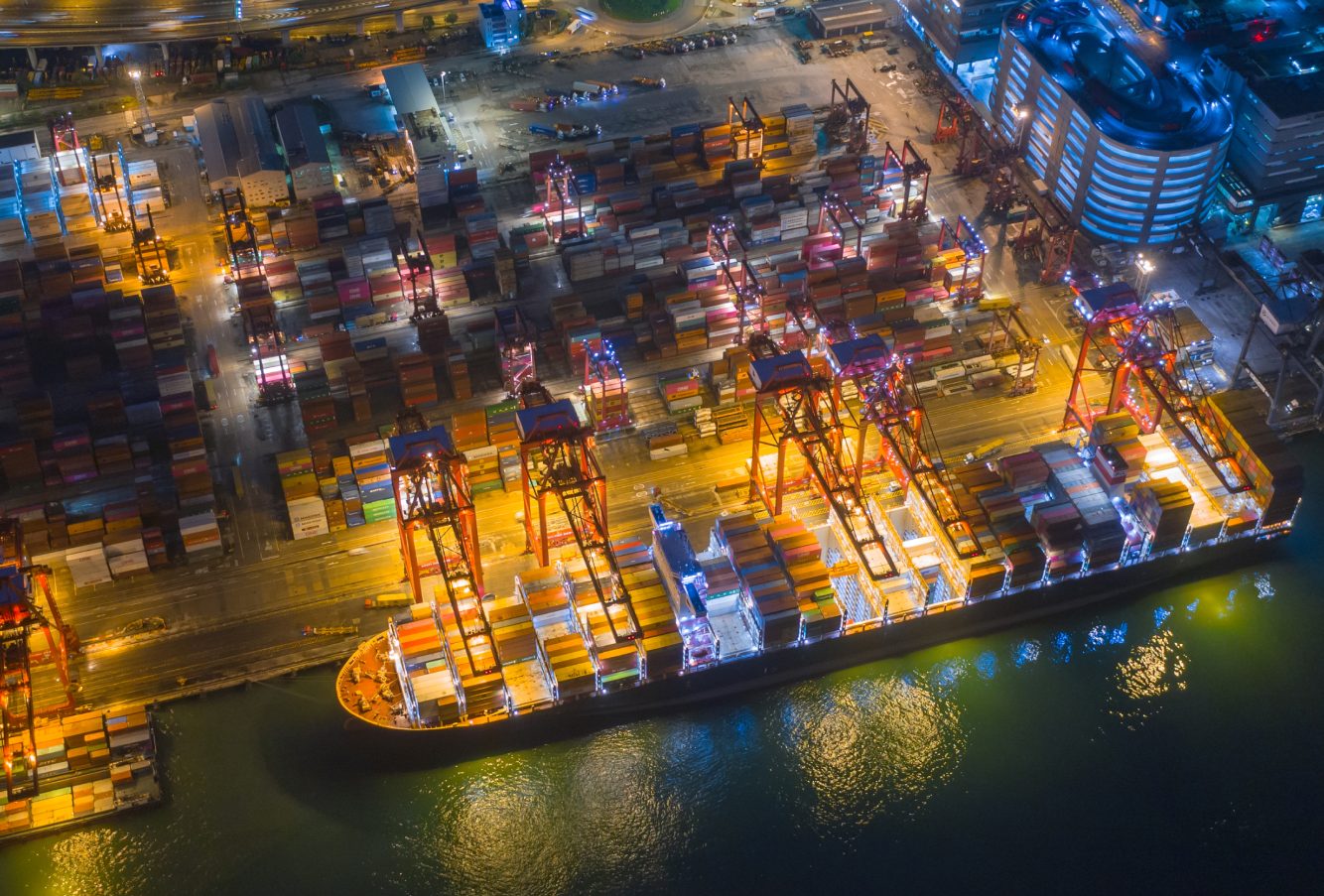A Comprehensive Guide to Shipping from Nansha Ocean Port to the US
Latest update on 1 August, 2024 by Angelina Pang– Marketing Analyst at FreightAmigo
Shipping goods internationally can be a complex process, especially when dealing with large volumes and long distances. Nansha Ocean Port in China is one of the key maritime gateways for goods heading to the United States. In this guide, FreightAmigo aims to provide a detailed overview of shipping from Nansha Port to the United States, including the steps to prepare your cargo, the logistics and regulations involved, and tips to ensure smooth transportation.
Want to Instantly Compare International Express, Air, Sea, Rail Freight And Truck Logistics Management Solutions To Control Transportation Costs?
Preparing Your Shipment
Documentation and Compliance
Before you can ship goods from Nansha to the US, it is crucial to ensure that all necessary documentation is in order. The key documents include:
- Bill of Lading (BOL): This is a legal document that outlines the details of the shipment, including the type, quantity, and destination of the goods. It serves as a receipt for the cargo and a document of title.
- Commercial Invoice: This invoice provides detailed information about the shipment, including the seller, buyer, value, and description of the goods. It is used for customs clearance.
- Packing List: This document lists the items in the shipment, including details such as weight, dimensions, and packaging type. It helps customs officials verify the contents of the shipment.
- Certificate of Origin: Some goods require a certificate of origin to prove where they were manufactured. This can affect the duties and tariffs applied to the shipment.
- Import Licenses and Permits: Depending on the nature of the goods, you may need specific licenses or permits to import them into the US.
Ensuring compliance with both Chinese and US regulations is essential. Familiarize yourself with the Harmonized System (HS) codes for your products, as these codes determine the duties and taxes applicable to your goods.
Packaging and Labeling
Proper packaging and labeling are critical to protect your goods during transit and to ensure they are handled correctly. Consider the following:
- Durable Packaging: Use sturdy materials that can withstand the rigors of ocean transport. Pallets, crates, and containers are commonly used.
- Labeling: Clearly label each package with information such as the shipper’s and consignee’s addresses, a description of the contents, and handling instructions. This helps in the smooth handling and delivery of goods.
- Hazardous Materials: If you are shipping hazardous materials, ensure they are packaged and labeled according to international regulations to prevent accidents and ensure compliance.
Logistics and Transportation
Choosing the Right Shipping Method
When shipping from Nansha Ocean Port to the US, you have several options for transportation, each with its pros and cons:
- Full Container Load (FCL): This option is suitable for large shipments that can fill an entire container. It offers exclusive use of the container, which can reduce the risk of damage and theft.
- Less than Container Load (LCL): For smaller shipments that do not require a full container, LCL allows you to share container space with other shippers. This can be cost-effective but may involve longer transit times and a higher risk of damage.
- Roll-on/Roll-off (Ro-Ro): If you are shipping vehicles or machinery, Ro-Ro shipping might be the best option. Vehicles are driven onto the vessel and secured for transport.
Booking and Scheduling
To ensure timely delivery, it is important to book your shipment well in advance. Consider the following factors:
- Transit Time: The average transit time from Nansha Ocean Port to US ports varies depending on the specific route and destination. Plan for potential delays and factor in additional time for customs clearance.
- Carrier Selection: Choose a reliable carrier with a good track record for on-time delivery and cargo handling. Research different carriers and compare their services and rates.
- Freight Forwarders: Working with a freight forwarder can simplify the logistics process. They can handle everything from booking space on a vessel to managing documentation and customs clearance.
Customs Clearance and Duties
US Customs Requirements
Clearing customs is a critical step in the shipping process. The US Customs and Border Protection (CBP) enforces strict regulations to ensure the safety and compliance of imported goods. Key steps include:
- Entry Filing: Submit the necessary documents to CBP, including the Bill of Lading, commercial invoice, and any required permits or licenses.
- Customs Bond: A customs bond is required for all commercial shipments entering the US. It acts as a guarantee that all duties, taxes, and fees will be paid.
- Inspection and Examination: CBP may inspect your shipment to verify its contents and ensure compliance with US regulations. This can include physical inspections, X-rays, or other screening methods.
Duties and Taxes
Understanding the duties and taxes applicable to your shipment is crucial for budgeting and compliance. Factors that influence these costs include:
- Tariff Classification: The HS code of your goods determines the duty rate. Ensure that you classify your products accurately to avoid penalties and delays.
- Free Trade Agreements (FTAs): The US has FTAs with several countries, which can reduce or eliminate duties on certain goods. Check if your products qualify for preferential treatment under any FTA.
- Additional Fees: Be aware of additional fees such as harbor maintenance fees, merchandise processing fees, and other charges that may apply.
How to Ensure Smooth Shipping
Tracking and Communication
Keeping track of your shipment and maintaining open communication with all parties involved is essential for a successful shipping process. Here are some tips:
- Tracking Systems: Use tracking systems provided by your carrier or freight forwarder to monitor the progress of your shipment in real-time. This helps you stay informed about any delays or issues.
- Regular Updates: Stay in regular contact with your carrier, freight forwarder, and customs broker. Promptly address any issues that arise to prevent delays.
- Contingency Planning: Have contingency plans in place for potential disruptions, such as port congestion, weather-related delays, or customs holds. This can help you respond quickly and mitigate any impact on your supply chain.
Insurance and Risk Management
Shipping goods internationally involves inherent risks, including damage, theft, and loss. Protect your investment by:
- Cargo Insurance: Purchase cargo insurance to cover the value of your goods in case of damage or loss during transit. Review the policy terms to ensure it provides adequate coverage.
- Risk Assessment: Conduct a risk assessment to identify potential threats to your shipment and implement measures to mitigate these risks. This can include selecting reputable carriers, using secure packaging, and ensuring compliance with regulations.
Conclusion
Shipping from Nansha port to the United States involves multiple steps and careful planning to ensure safe and timely delivery of cargo. By understanding documentation requirements, selecting appropriate shipping methods, navigating customs clearance, and implementing risk management strategies, businesses can streamline their shipping processes and avoid common pitfalls. Through FreightAmigo’s professional knowledge, you can have a better understanding of regulations and market conditions and improve the efficiency and reliability of international transportation operations. With the right preparation and methods, shipping goods from Nansha to the United States can be a smooth and successful process.
If you are looking for logistics experts, please visit FreightAmigo Page
If you have any inquiries on logistics / supply chain, feel free to contact FreightAmigo now:
Chat with us online | Hotline: +852 28121686 | WhatsApp: +852 27467829










































